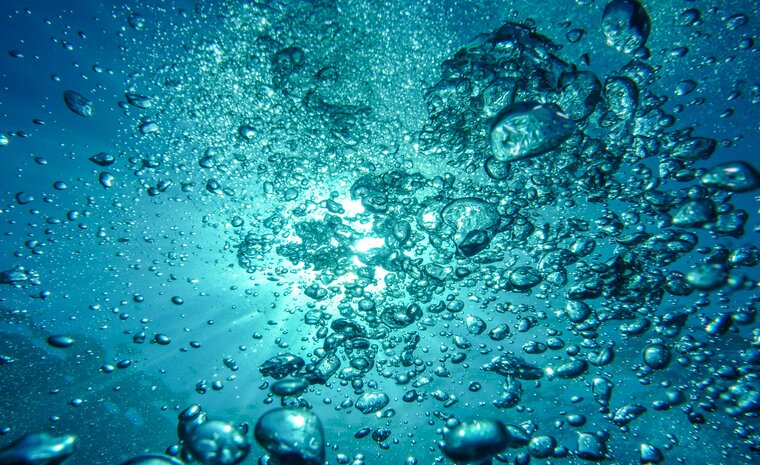
Resumen generado por IA
La Tierra, conocida como el planeta azul debido a que los océanos cubren el 70% de su superficie, alberga una vida marina que se ha adaptado a condiciones extremas a lo largo de millones de años. Esta vida marina es fundamental para los seres humanos, que dependen de sus recursos para actividades como la pesca. Con el avance tecnológico, se ha profundizado el conocimiento y la exploración de los organismos marinos, dando lugar a innovaciones en el campo de la biotecnología azul.
La biotecnología azul, según REBECA, se refiere a la aplicación de la biotecnología en ambientes acuáticos y marinos, y está estrechamente vinculada con la bioeconomía azul, que promueve el uso sostenible de recursos renovables acuáticos. Este sector abarca sectores como la alimentación, la salud y la energía, y ofrece grandes oportunidades en Europa, donde la extensa línea costera favorece el desarrollo de startups que innovan en soluciones marinas. Entre 2014 y 2020, la UE invirtió más de 238 millones de euros en proyectos relacionados con esta área, con países como Portugal y Francia liderando la innovación.
España y Portugal destacan por su ubicación geográfica y potencial competitivo en biotecnología azul. En Portugal, el programa Blue Bio Value ha acelerado 28 startups en 15 países desde 2018, mientras que en España, PharmaMar desarrolló Yondelis, el primer fármaco antitumoral marino aprobado en la UE. Además, el Parque Tecnológico de Gran Canaria impulsa proyectos con apoyo nacional y europeo, consolidando la importancia de esta tecnología en la región.
With Europe's geographical characteristics and with a proper strategy designed by and for all the actors involved, this can be a sector in which European leadership will prevail.
The Earth is also known as the blue planet. A nickname that fits perfectly, at least if we see it from space, because blue dominates over other colors. The reason: the oceans cover 70% of its surface.
In this context, there is no doubt that marine life is particularly important. A life that, over millions of years, has adapted to survive in extreme environmental conditions. Moreover, this is of great importance for human beings who have depended to a large extent on these resources to sustain themselves. Fishing, one of the main activities we carry out in the sea, is a good example of this, but there are many more.
However, with the rise of modern society and the emergence of new technologies, humans have been able to explore more of the oceans and understand better the many marine organisms that inhabit the seas.
What is blue biotechnology?
REBECA (Network of Excellence in Blue Technology), a regional development and cooperation platform created to promote this technology within the geographic scope of the Macaronesian region and northwest Africa, points out that it is a term used to designate the various existing applications of biotechnology to aquatic and marine environments.
It is closely related to another similar term: the blue bioeconomy, activity based on the sustainable use of renewable aquatic resources and water knowledge. Key sectors in this regard include commercial activities based on expertise and technology around water, aquatic tourism, utilization of aquatic biomass and the fishing value chain. Its applications are therefore potentially numerous in different fields, such as food, health or energy.
Advantages of blue biotechnology
The EU coastline is 68,000 km long, more than three times that of the United States and almost twice that of Russia. Including the EEA (European Environment Agency) member countries Iceland, Norway and Turkey, the coastline reaches 185,000 km in length.
With so much space to cover and unique marine habitats within European jurisdictions, there are great opportunities for EU-based blue technology startups to capitalize on. Whether in the food, pharmaceutical, energy or fashion sector, ocean-based solutions can provide many disruptive innovations and have the potential to solve some of today’s biggest societal challenges.
Given these figures, it is not surprising to see this sector gaining momentum in Europe. At least, that is what is clear from the data we have. For example, in the 2014-2020 funding period, more than €238.6 millions of EU funds have been invested in 182 projects and initiatives related to blue biotechnology with a total budget of €336 million. So far, 12 EU countries have prioritized this sector, such as, Portugal and France, which have a strong regional focus on blue technology innovation.
Spain and Portugal: great potential
Spain and Portugal have great potential in this sector, due to their location and geographical characteristics, making them competitive locations for blue companies looking to innovate with marine water-based solutions.
For example, in 2018, the Blue Bio Value acceleration program launched, with the support of the Oceano Azul Foundation and the Calouste Gulbenkian Foundation, organized its first competition for blue startups looking to grow in Portugal. Since its inception, it has accelerated a total of 28 companies in 15 different countries.
In the case of Spain, PharmaMar was the first company to cover all phases of development of a marine-derived drug down to marketing. The anti-tumor drug Yondelis has become the first marine-derived drug approved in the European Union for two cancer indications. Another example is the Gran Canaria Technology Park – Blue Biotechnology and Aquaculture Experimental Area, which has received funding from both the Spanish administration and the European Union.



